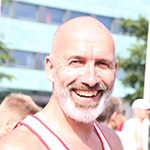Resilience is often defined as the ability or process of adapting well in the face of adversity, trauma, tragedy or threats of significant sources of stress. This does not mean the person does not experience difficulty or distress, it simply means they have developed and practiced techniques with a mindset that allows them to create a more balanced approach to challenging times.
What if the challenge to overcome is not as obvious as a direct trauma or tragedy, one that does not happen in an instant? What if this adversity cannot clearly be seen by others in order to know that this individual requires support? What if this stressor is a constant and slowly eroding the individual’s confidence and ability to manage the increasing demands on both their personal and work lives?
The reality of many business leaders is that this adversity goes undetected, as they have found a different form of resilience in the art of masking. They are sending core messages to their community that ‘I got this and I am Ok’. At the heart of all resilience sits mechanisms for protection against the experiences, which could be overwhelming. These could either be positive, allowing the leader a more sustainable outcome, or a company mask that eventually becomes too heavy to maintain.
Let’s be real for a minute and just stop and look at all the pressure that is put on us by external and internal forces. The pace of business and technology, the needs of both stakeholders and the team and this is not even touching on all that is happening in our personal lives. It is so important to acknowledge, understand and manage the factors that cause us to feel so overwhelmed and stressed at work. We need to stop and be honest as truly resilient people are aware of the impact that situations, their emotional reaction and the behaviours others have on them.
In my research, for our upcoming Resilience workshop, I found countless similar definitions and lists of character traits on the topic time and time again. I struggle to find anything on what I call resilience masking traits – where a leader appears to be busy, active and connected, but when you look closely and with empathy, you can begin to see that they are secretly manifesting signs of a need for assistance and support.
If unmanaged these can have extremely negative effects on the individual, the team that they manage and also the overall success of the company and culture that they represent. It often stems from an inherent lack of confidence or ability to perform in the role, and in this their inability to ask for help. Here are three negative factors that will increasingly become more evident as a leader’s ability to cope with the hidden pressures unravels.
Health:
Work-related stress is what you feel when you have demands at work that exceed your ability to cope. A little stress can also be exhilarating if it is in your sphere of ability to overcome and you are practicing healthy resilience techniques. In the case of leaders that are outside this sphere and masking that ‘they are ok’, then stress levels increase exponentially. This will not only have a negative impact on their mental health but also begin to manifest into physical signs. Either way, the individual will show early warning signs that they are struggling in silence.
Masking is exhausting and hence begins to break down the body’s immune system and ability to reach a healthy state of relaxation. The physical implications of negative or undetected stress from being overwhelmed are staggering and can slowly erode a leader’s ability to perform effectively. Mood changes such as irritability, overt negativity about others or situations or a false sense of positivity can all be signs that the leader is struggling to be their authentic self.
This can lead to lack of sleep, poor diet, increased alcohol consumption which then, in turn, leads to more of the same as the mask becomes heavier and harder to maintain. This lack of balance and sense of freedom to be in flow means that they are always on the move and what I call ‘busy being busy’, showing their team evidence that they are ‘on it’. Maintaining this false sense of power and status adds to more continued stress and hence further health problems.
Risk Taking:
Following on from a breakdown in a healthy mind and body comes a leader’s inability to make key decisions. This kind of risk-taking is not to be confused with being risky or taking unnecessary chances, as to be a great leader one must be prepared to take risks and make decisions that do not yet have a proven outcome. Leaders are ultimately judged on the results that they deliver and when masking resilience these leaders often get stuck in a state of just treading water and always remaining in planning mode.
Risk taking can be defined simply as undertaking a task in which there is a lack of certainty. The problem at the core of risk-taking is fear; fear of failure, fear of standing out and being noticed and fear that they will show a lack of knowledge. A resilient leader’s success is about finding different solutions to long-standing issues that are getting in the way of results. For many leaders, the lack of risk-taking means that they try to keep things the same even if it is not to the advantage of the team or the organisation.
In their inability to transform, one of the keys signs of leaders masking resilience is to always be in a meeting. It is in these meetings where they often forge relationships with other leaders who share a similar lack of confidence masked as resilience. Hence, together they develop their own support network that further supports their own belief that they are being resilient and working effectively. If you are seen to always be busy then that is what hard work looks like, and the need to make a decision becomes lessened. However, this creates a knock-on effect as the culture around them begins to erode and the demands on them to perform increases. The ultimate catch 22…
Relationships:
Factors that lead to healthy resilience at work include the ability to stay balanced, focusing on positivity, managing difficult emotions, forward thinking and the building of a strong and supportive community. It is with these factors that a resilient leader manages their environment in a manner that decreases the actual stressor. It is here that resilience becomes a way of working not only by the leader but also within the team that they support.
In the case of a leader that is masking resilience, they increasingly find difficulty in building relationships built on trust and integrity. It is here that the law of attraction applies, as they tend to surround themselves with others who lack the ability to take risks and they find solace in the negativity of others. Together they can support each other’s belief that their inability to perform must be based on external factors and therefore there is no need to take personal responsibility. This can give some comfort in the short term; however, it does mean that they begin to neglect their core duty as a leader and with this increases the poor performance of others.
As the pressure begins to increase often leaders masking resilience will begin to extradite themselves from their core duties and direct relationships with their successful peers and team. The unconscious fear of being a fraud builds up as more pressure is added and the mental and physical signs of stress further manifest. It is like a house of cards ready to fall and the individual struggles to ask for help, as in their mind, this will be a sign of weakness. To balance this they often put additional stress on the team to perform and this further demonstrates what they believe leadership looks like.
In summary, the first step to any recovery is admitting that you need help and ‘so what?’ – We all need help from time to time. It is that fact that makes us human and in the art of humility sits greatness. This ability fuels not only our own resilience but also the foundation for healthy and honest relationships that surround us. The role of a leader is complex and can be very stressful as our workplace demands increase. Hence, that is why resilience is a key component that must be addressed if organisations are to build healthy and supportive workplace cultures.
Someone recently asked me if resilience is considered a personal value and after some deep consideration, I believe it is. Resilience can be learned, acquired and deeply honed through conscious decision-making and observation hence it requires an individual to be present and with a purpose to strive forward. This is why I believe that resilience is the foundation of great leaders – not for self-preservation but so that they can be strong during times of challenge for others.
The role of great leaders is a delicate balance between protecting the team from adversity and letting them experience their own challenges and in so developing their own resilience.
Dale Smith
Creative Director
There is still some space on Bridge’s Resilience open workshop on Tuesday 9th October; see more here and contact Bridge to book on!



